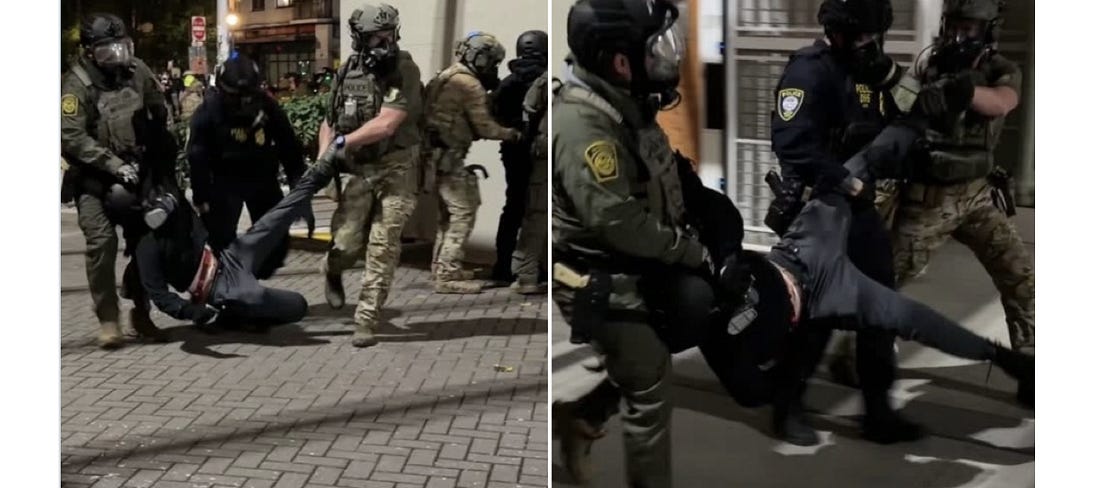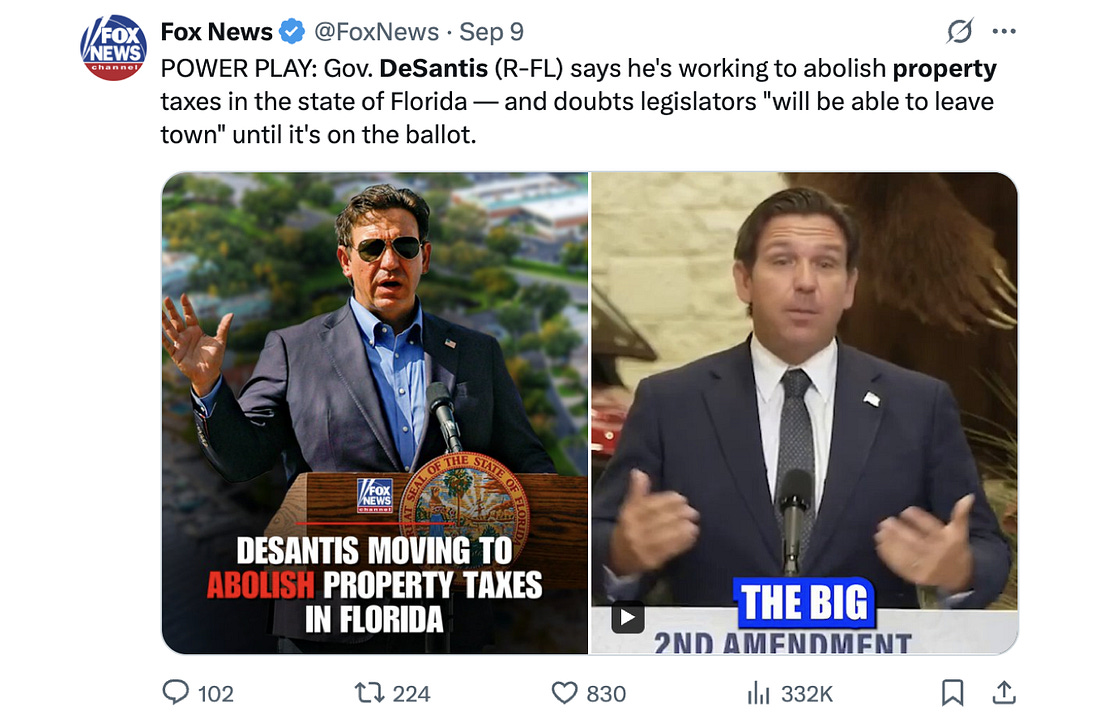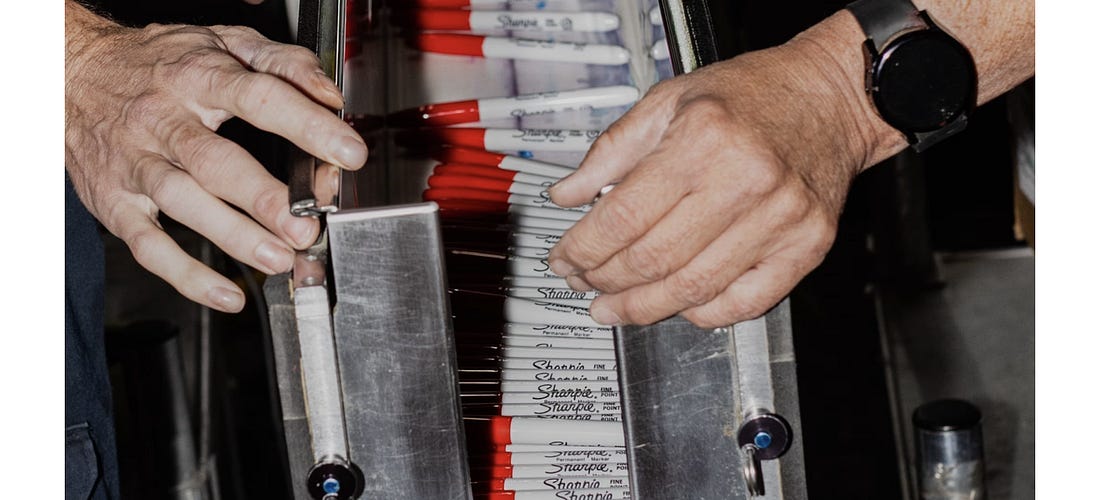C&C. JUST COMPENSATION. CA Guard to Portland. SCOTUS New Term.
October 6 | Posted by mrossol | American Thought, Antifa, Business, Childers, Crazy, Economics, Policing, SCOTUS, US CourtsFederal judge blocks Guard from Portland’s “peaceful” riots; protestors plan ugliest attack yet; Supreme Court takes case that could upend local graft; and Sharpie proves U.S. can outmake everyone.
Source: JUST COMPENSATION ☙ Monday, October 6, 2025 ☙ C&C NEWS
WORLD NEWS AND COMMENTARY
🔥🔥🔥
What would we do without judges? Early this morning, CNN ran a story headlined, “Federal judge temporarily blocks Trump from sending any National Guard troops to Portland.” Here’s Judge Karin J. Immergut (no, she’s not crazy, stop saying that):
Last night, Portlandistan-based Judge Immergut (a Trump 1.0 appointee) blasted the Administration’s attorneys for violating the spirit of her Friday order, which had barred the deployment of Oregon’s National Guard to the Nation’s most cretinous city. Complying strictly with Immergut’s order, which clearly said “Oregon Guard,” Trump responded by deploying the California National Guard there instead.
Like Queen Victoria, her majesty Judge Immergut was not amused. Yesterday, after polishing off her ethically sourced, micro-grain-infused, vegan brunch, a second fractious hearing ensued, and the judge clarified that this time, no National Guard from any state can be deployed to Portland, which is absolutely, definitely, 100% not amidst any kind of rebellion or insurrection that would permit use of the U.S. military inside national borders.
In her order, and I am not making this up, without a scintilla of irony, Judge Immergut described the riotous protests outside Portland’s ICE facility as … “mostly peaceful.”
To give you some sense of the surreal, “mostly peaceful” scenes, based on social media eyewitness reports and video: In the shadow of Portland’s usually quiet ICE facility, the last 24 hours erupted into a chaotic symphony of defiance and force, where swirling clouds of acrid tear gas painted the night sky in hazy whites and grays, punctuated by the sharp cracks of crowd-control munitions echoing like thunderclaps through Oregon’s misty streets.
On Saturday night, Black Hawk helicopters angrily thrummed overhead like predatory birds, their rotors slicing the thickening tension as federal agents, clad in tactical black and camo, surged forward, dispersing hundreds of masked protesters with pepper balls and swift arrests, only for the crowd to coalesce again under the glow of streetlights, their chants rising like a fervent chorus against the backdrop of flashing emergency lights and scattered debris.
By dawn, the fervor simmered into daytime standoffs, with smaller groups facing off in the crisp autumn air, banners fluttering in vibrant reds and blacks amid the lingering sting of chemical irritants, a vivid tableau of unrest stretching from midnight clashes into the afternoon’s queasy calm.
Yesterday, courageous (or reckless) counter-protestors began to arrive on the shambolic scene. Federal workers watched helplessly while black-clad activists surrounded and beat down counterprotesters just outside the federal perimeter. Desperate calls from ICE officials to Portland’s police department, reporting several in-progress attacks against counterprotestors, went ignored, unanswered, or were summarily dismissed.
In other words, it’s turbulent chaos. Portland protestors plan even more lurid and offensive escalation. Also this morning, an eye-watering headline appeared in the UK Independent:
Based on previous ‘naked bike protests’ —Portland has legalized nude protests— many Portlanders are obviously not only weird, crazy, and retarded, but in large numbers they are evidently not the kind of folks that anyone wants to see naked. Our dedicated immigration officials will soon suffer cruel and unusual cycling punishment, an incomprehensibly vicious visual attack.
At the time of press, it was unclear whether Judge Immergut would participate in the naked cycling event. Long the butt of C&C scorn, Portland has not disappointed us this time, either. I have a whole new —and completely unwanted— mental picture for the expression, “the naked city.”
🔥🔥🔥
Today is the storied first Monday in October, when the Supreme Court convenes and kicks off its annual session. A top-of-page article in the New York Times previewed this could be the most consequential term in U.S. history. We’ll begin with a case completely off the Times’ radar. The Detroit Free Press ran the story Friday, headlined, “Michigan family’s long fight over foreclosed home is going to the U.S. Supreme Court.
CLIP: Homeowner’s lawyer Phillip Ellison explains landmark foreclosure case (18:42).
Isabella County’s tax assessor levied a $2,200 property tax against a citizen’s $200,000 ranch-style home. The homeowner disputed the tax, but before the dispute was resolved, the county foreclosed the home anyway. The foreclosure auction netted around $78,000. The homeowner had to sue to get the county to cough up the difference, which started the judicial ball rolling on a 15-year case that now threatens to teach Isabella County a lesson it will never forget.
The homeowner wasn’t satisfied with getting his $76,000, the excess proceeds from the foreclosure sale. His house was worth at least $200,000, not $78,000. To be clear: the $200,000 was the tax-assessed value, the number the county had calculated, the figure upon which the homeowner had been paying taxes.
So the lawsuit continued. The homeowner’s lawyer argued that the lost value of $122,000 (the difference between $200,000 and $78,000) was either an unconstitutional taking of property under the Fifth Amendment, or an unconstitutionally excessive fine under the Eighth Amendment.
🔥 Under the Constitution’s Fifth Amendment, the government may not take citizens’ property without “just compensation.” Courts, including the Supreme Court, have long danced around the issue of property taxes, making an exception for the levying of taxes on, and foreclosure of, what is usually citizens’ most important and valuable property of all: their homestead.
But in 2023, the Supremes began to push back, barely, holding for the first time that tax foreclosures seizing and selling property for unpaid property taxes must comply with the Fifth Amendment’s Takings Clause and due process protections.
All fifty states tax people’s real estate property. In Florida, property taxes are the biggest source of revenue for 51 out of 67 counties, and for almost half of the state’s 411 cities. The Tallahassee Democrat reported last week that over $55 billion in property taxes flowed to Florida counties, cities, and school boards last year– more than double what was collected in 2014, and +46% higher than the amount collected only four years ago.
On Friday, the U.S. Supreme Court agreed to take the Isabella County case, causing the country’s county commissions and city councils to jolt like naked cyclists goosed with a cattle prod. There’s no reason for SCOTUS to hear this case unless another change in the law is at least possible. If the Court were to require foreclosing counties to pay fair value, the whole house of cards could come crashing down.
Isabella County’s lawyer correctly observed that, “if the former property owners are entitled to more than surplus proceeds actually yielded by the sale, tax foreclosure becomes a money-losing proposition. Foreclosure would become nonviable as a means of tax collection.”
🔥 The property tax issue has lately been percolating harder than a coffeepot left on the stove for too long. Governor DeSantis, for example, is spearheading an admirable effort to end property taxes on Floridians’ homesteads, arguing that “when you buy your house, you should own it, not rent it from the government.”
A battle is brewing between Florida’s Republican supermajority legislature and the Governor. Late last week, Politico ran a story headlined, “DeSantis vows to come up with his own plan to cut property taxes.” According to reports, the Governor plans to force legislators into a special session till they cough up a ballot initiative to amend the state constitution.
🔥 The new Supreme Court term that begins today will, according to the New York Times, “be a term of generational consequence for the court and the presidency, and a defining one for the legacy of Chief Justice John G. Roberts.” Pamela Karlan, a former Obama/Biden official and the co-director of Stanford’s Supreme Court Litigation Clinic whined, “We’re going to see, among other things, whether the Supreme Court is actually going to say no to Donald Trump on anything.” (TAW)
Irv Gornstein, who runs Georgetown’s Supreme Court Institute, said, “we are in for one of the most polarizing terms yet.” Try to imagine things getting morepolarized, I dare you.
Pending on the Court’s newest docket are high-profile cases like: male transsexxual ‘rights’ to play for girl’s sports teams, a case involving a Christian counselor charged under a Colorado law banning therapists from counseling kids to stick with their biological gender, the 1965 Voting Rights Act that allows racially-defined minority voting districts, the legality of rules restricting mail-in ballots, Trump’s tariffs, campaign financing, and whether the President can fire mortgage fraudster and fed governor Lisa Cook. Plus even more.
Does this sound familiar? Jonathan Adler, a William & Mary law professor, told the Times that, “one reason Mr. Trump has been so successful at the court so far was that his lawyers have been able to cherry-pick which cases to bring to the justices, largely avoiding some of the thornier disputes.”
In other words, we’re not the only ones who can see there is a plan, and the Administration is working the plan.
✒️✒️✒️
President Trump is making markers great again. Yesterday, the Wall Street Journal ran a delightful and timely story headlined, “Sharpie Found a Way to Make Pens More Cheaply—By Manufacturing Them in the U.S.” The subheadline added, “Newell Brands moved production without cutting employee count or raising prices.” For my entire adult life, I was told this kind of thing was impossible. The writing was on the wall. They said: America just can’t compete with lower Chinese labor costs.
In 2000, Sharpie’s pen production began moving to China. By 2018, most Sharpies were made abroad. About five years ago, a new CEO, Chris Petersen, decided to take the company in a different direction. He drew a line of defiance against conventional knowledge and initiated a vast update operation, retooling the firm’s U.S. marker factory and updating it to match the newer technologies used by the Chinese, such as by installing pen-packing robots and retraining U.S. employees.
Guess what happened?
These days, most Sharpies —93 glorious colors— are made at a single 37-year-old Tennessee factory. Mr. Newell did it without cutting staff or raising prices. He did it without layoffs, price hikes, or red ink. Wages have actually jumped 550% in five years, quality is up, orders move faster, and shipping costs are down.
The Tennessee factory runs around the clock, ceaselessly making 1.8 million fine-tip Sharpies a day.
“It’s really night and day compared to when I first joined,” Peterson said. “There’s no longer a reason to manufacture Sharpie outside the U.S.” But how?
✒️ For decades, the industrial gospel has revolved around a single input: cheap labor. You can’t win that race at home, professors assured every new business major. American labor was too expensive, regulations were too thick, and economies of scale were too tiny to compete with Asian factories. Experts warned executives that any attempt to match Chinese margins would promptly collapse under union wages and energy bills.
The experts’ verdict was unanimous — manufacturing in America was dead.
Yet the Sharpie story destroys that globalist dogma like permanent ink on a whiteboard. It turns out that foreign advantage wasn’t cheap hands— it was fresher tools. China’s manufacturing boom began with brand-new machinery, modern factory floor layouts, and digital logistics. The U.S., by contrast, was stuck with aging plants and pre-internet management systems running on 1980’s PCs. China wasn’t winning on labor; it was winning on timing.
When Sharpie retooled its Tennessee facilities with automation, real-time data, and lean processes, the cost curve flipped almost overnight. This story reveals the grotesque, irrational premise behind the globalist mantra, the false but entrenched notion that labor cost is the lodestar that eclipses all other manufacturing considerations.
Sharpie is the ideal case study. Pens are the last thing anyone expected could be made profitably in America — low-margin, high-labor, cheap materials, no luxury pricing. The “experts” swore this kind of production simply couldn’t survive stateside. But Sharpie did it anyway. By upgrading its Maryville, Tennessee plant with robotics and retraining, it turned a supposedly unviable, labor-heavy product into a triumph of domestic efficiency.
Today, millions of “impossible” pens roll off American lines each day, proving that what we lacked wasn’t muscle — it was imagination.
For months, the same globalist experts have sneered that Trump’s tariffs —designed to repatriate manufacturing— were impossible. They’ll never work.If manufacturing does come home, they scoffed, hyperinflation will come with it. In their view, America just can’t compete anymore. We’re stuck with a second-class “service economy.”
But tariffs have worked; inflation hasn’t come back; and Sharpie proves that, if American factories can compete on an even manufacturing floor —using the same tech the Chinese do— we can beat them. Sharpie didn’t just draw a line to a Tennessee factory, it completely crossed out globalist economists, who were never neutral observers anyway. They wanted manufacturing exported to the developing world, which explains their obsessive focus on cheap labor— the lone input that America couldn’t reproduce.
In truth, the foreign advantage was never labor — it was reinvestment. While China poured capital into modern factories, robotics, and logistics, America shuttered its aging plants and congratulated itself at seminars on “efficiency through outsourcing” and a “global supply chain.” We didn’t lose manufacturing to Asia; we gave it away. Marker-sniffing globalists didn’t just predict the death of American industry — they engineered it in 97 colors of ink.
Thanks to President Trump and a rainbow of delightfully colored markers, we aren’t out of the race. There’s still time to turn it around. Let’s go.
Have a marvelous Monday! A whole new roundup of essential news and commentary awaits you tomorrow, right back here at the same coffee-slurping time. See you then.
Don’t race off! We cannot do it alone. Consider joining up with C&C to help move the nation’s needle and change minds. I could sure use your help getting the truth out and spreading optimism and hope, if you can:☕ Learn How to Get Involved 🦠












Leave a Reply
You must be logged in to post a comment.